The expansion tank is one of the most important components of a hot water heating system.
This small but mighty tank plays a critical role in maintaining the proper pressure and temperature in your system and ensuring that it runs smoothly and efficiently.
However, selecting the right size expansion tank for your system can be a bit of a puzzle.
But don’t worry; in this article, we’ll break down everything you need about expansion tanks and help you determine the perfect size for your hot water heating system. So, let’s get started!
When Sizing An Expansion Tank, What Should You Consider?
The size of the expansion tank required for a hot water heating system depends on the volume of water in the system, the temperature of the water, and the pressure in the system.
A properly sized expansion tank will typically have a volume equal to about 2-5% of the water volume in the system.
It is important to consult with a professional plumber or heating contractor to ensure that the expansion tank is properly sized for your specific system. They will also help you determine the type of tank best suited for your needs.
Sizing And Selecting Expansion Tanks For Water Heaters
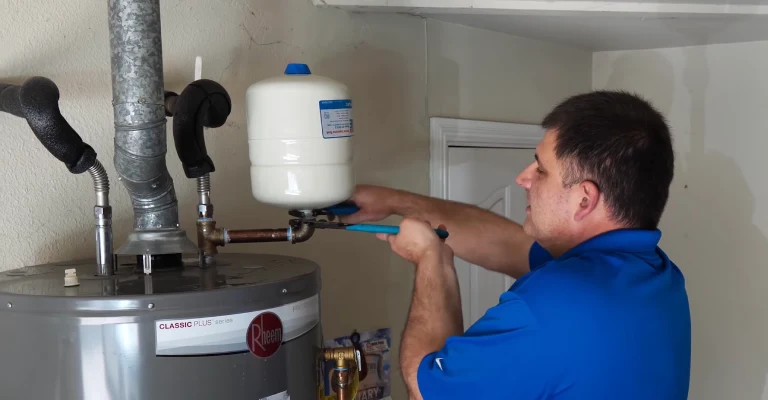
Heat causes water to expand and increase in volume. Because water is non-compressible, this thermal expansion places enormous pressure on the piping and components!
It is possible that this water pressure could result in leaks and even ruptures in the piping if left unresolved. Expansion tanks provide additional space for the expanded water and relieve pressure on the system.
As well as wasting energy, shortening system life, and potentially creating a safety hazard, having no expansion tank makes your relief valve open by pressure. An expansion tank is simply a container for air separated from water by a diaphragm.
A precharge pressure equal to the expansion tank’s fill pressure occurs when the heating system is filled with cold water, causing the expansion tank’s diaphragm to extend fully against the tank.
As the water temperature in the system rises, the expansion tank absorbs the expanded water.
Diaphragms return cooled water to the system after reaching their maximum temperature and decreasing.
The following chart can help you determine the proper size of an expansion tank for your residential water heater. A temperature of 150 degrees is assumed.
| Water Heater Capacity | Supply Pressure (psi) | Expansion Tank Size |
| 40 to 60-gallon | 40-50 psi | 2-gallon |
| 40 to 60-gallon | 60-80 psi | 3.2-gallon |
| 80-gallon | 40 psi | 2-gallon |
| 80-gallon | 50-60 psi | 3.2-gallon |
| 80-gallon | 80 psi | 4.4-gallon |
A professional should check water heaters that fall outside these static supply pressure readings or capacities. You can schedule them to come out and make the necessary calculations and install the expansion tank.
When Do I Need an Expansion Tank?
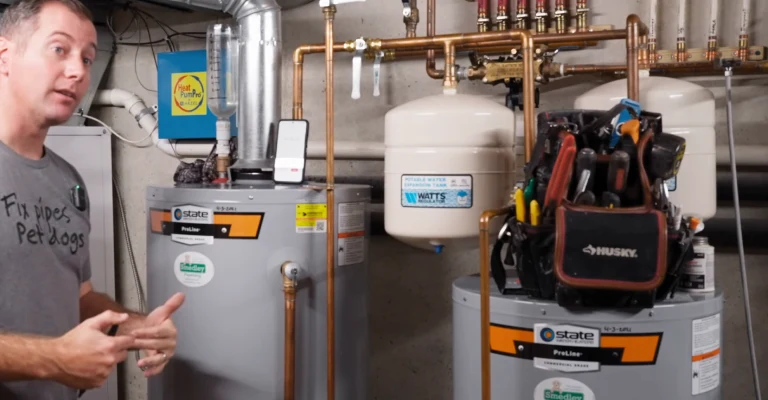
Depending on your city or county, you may need expansion tanks for all water heaters. Some locations, however, don’t require expansion tanks, and they’re optional.
It is generally recommended that you have an expansion tank whenever you have a closed-loop water system, regardless of the code requirements.
Water systems with closed loops are those with any kind of check valve or pressure regulator.
When the water pressure in the house is between 40 and 80 psi, however, these types of valves are necessary.
The expansion tank is not there to slow down pressure but rather to reduce the thermal buildup that occurs when pressure valves are in place.
Thermal pressure can’t be released without an expansion tank in a closed-loop system because of its nature.
Suppose you’ve ever seen a water heater that failed due to thermal expansion; its sides balloon out as though there was an explosion inside. The thermal expansion tanks keep this from happening by providing a place for the pressure to go.
What Sizes are Expansion Tanks Available in?
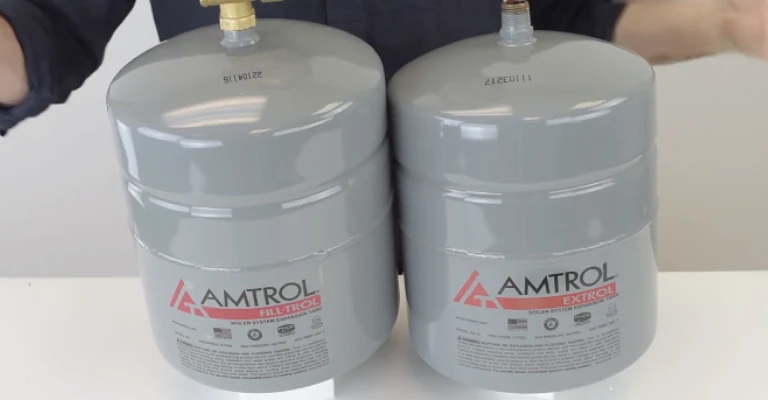
Depending on the application, expansion tanks come in two sizes, 4.5-gallon, and 2-gallon. Depending on the size of your water heater and the pressure of the water running to it, you need a different size.
When the water in a water heater heats up, it expands. Thermal expansion tanks are called such because they allow thermal expansion. The expansion of 50 gallons of water to 52 gallons can be considered a general rule.
A 2-gallon expansion tank will usually accommodate a 50-gallon water heater. When in doubt, it’s better to go up rather than down regarding expansion tanks.
There is no problem with having too big tank, but it can be problematic with having too small a tank.
How Do I Size A Water Heater Expansion Tank?
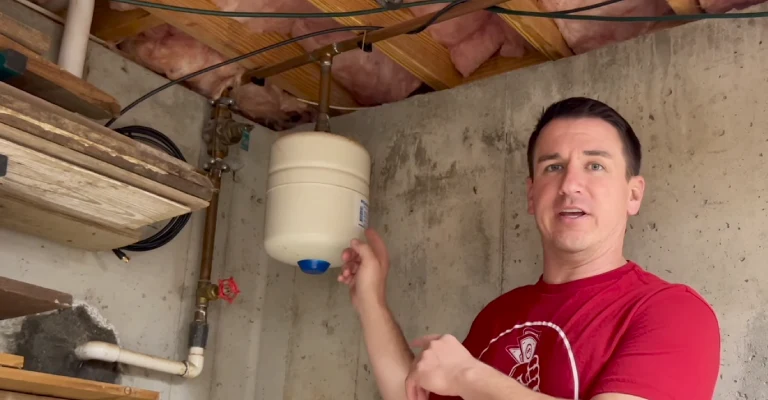
The following is a step-by-step guide to sizing the expansion tank on a water heater.
1. Visit an online expansion tank calculator website.
2. You will need to enter the water pressure that is feeding your home.
3. You will need to enter the number of gallons your water heater holds.
4. You can enter the pressure setting with a relief valve on your water supply.
5. You may need to go up one size if the minimum expansion tank size isn’t sufficient.
Choosing The Right Size For Your Expansion Tank
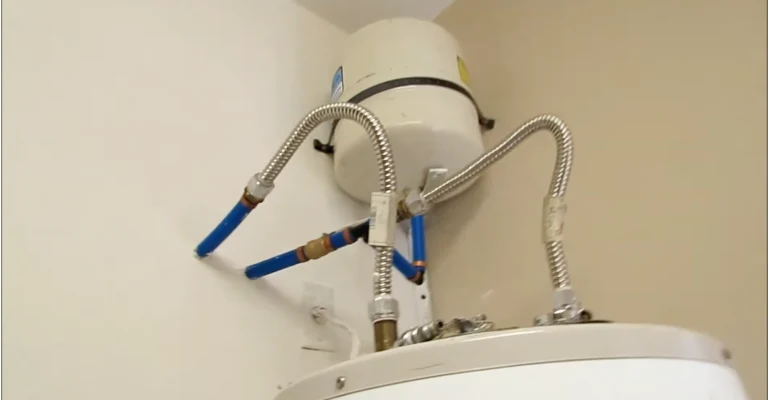
Before purchasing an expansion tank, you should determine how much your system requires. Two factors will influence the decision. First, you need to know how many gallons your hot water heater or boiler has.
You can find this information on your water heater or boiler’s factory label. A second factor to consider is the water pressure in your system.
Using a small gauge or contacting your local water utility will provide you with the information you need for plumbing applications.
Typically, the pressure of hydronic and radiant heating systems never exceeds 30 pounds per square inch. You will have to discharge your relief valve if your expansion tank is smaller than what you need for your system.
However, having an expansion tank that is larger than you need is not a problem.
The common practice is choosing an expansion tank that is one size larger than the required size if you are unsure that it will accommodate your system safely.
Oversizing is always preferable to under sizing when it comes to expansion tanks.
What Happens If The Expansion Tank Is The Wrong Size?
You should always choose the right size thermal expansion tank if you’re in doubt, but it is better to go larger rather than smaller if you’re unsure.
Despite being too large for your system, an expansion tank will still be able to handle the extra water. An inadequate tank can cause the temperature and pressure relief valve to open, releasing excess pressure.
What Size Expansion Tank Do I Need for a 50 Gallon Water Heater?
The expansion tanks above your water heater provide water for your house by storing water in smaller tanks. Expansion tanks for different sizes of water heaters must be selected based on their size and design.
There is generally a greater expansion tank size associated with larger water heaters. It is necessary to have a 2-gallon expansion tank for a 50-gallon water heater.
However, depending on your water pressure, you may need an expansion tank as large as 4.5 gallons. You should only consider two factors when choosing an expansion tank: the size of your water heater and the pressure of your water supply.
How Much Does It Cost to Install an Expansion Tank?
An installation of a thermal expansion tank normally costs between $250 and $500. It is important to consider the cost of the expansion tank itself as well as the installation time when estimating total expenses.
It takes one to two hours to install expansion tanks, and plumbers usually charge between $70 and $150 per hour. As far as the tank itself goes, it usually costs between $40 and $200, depending on its size and brand.
It will cost more to purchase a 4.5-gallon tank than a 2-gallon tank, and brands such as Aretrol and Smith are more expensive. Tanks that are designed for thermal expansion usually cost more than those that are designed for condensation.
Should The Expansion Tank Be Installed On The Hot Or Cold Side Of My Water System?
In some cases, installing an expansion tank on the hot water side may be OK, but, if possible, they should always be installed on the cold side.
Is It OK To Oversize A Thermal Expansion Tank?
A thermal expansion tank should always be oversized, but it should not be undersized, either. If a tank is too large, it will be slightly more expensive to buy, but there will be no environmental harm.
You should always go too big rather than too small if you are uncertain about what size your tank should be.
Can I Install An Expansion Tank Myself?
Unless you are an expert plumber, you can install an expansion tank by yourself if you have the needed tools and skills. Installation instructions are included with each expansion tank.
Does An Expansion Tank Affect Your Water Pressure?
Expansion tanks are affected by water pressure, but your tank is not affected by water pressure. There is a common misconception that expansion tanks will reduce your water pressure, but this is not true.
What Is The Life Expectancy Of An Expansion Tank?
The lifespan of your expansion tank can’t be predicted with any certainty. Depending on the model, some can last for a decade or more, while others can last as long as two years after installation.
Two things impact a tank’s lifespan: its quality and how it was installed. In addition to water quality, other factors affect durability as well.
Can I Have More than One Expansion Tank?
It is possible to have one expansion tank per water heater if you require multiple water heaters. It is not recommended that more than one expansion tank be connected to a water heater.
But it is possible to connect multiple water heaters to an expansion tank simultaneously. It is also possible to have separate expansion tanks for each water heater in your house.
Final Words
In summary:
The process of selecting the right size is relatively straightforward. In order to ensure success, two primary factors must be considered:
- Water Heater Capacity: Located on the factory label attached to your water heater, this information shows how much water your heater can heat.
- Household Water Pressure: You can use a gauge to measure the water pressure within your home’s plumbing in psi (pounds per square inch).
Water can be turned on by attaching the gauge to a hose or faucet. Ensure that your water pressure is checked at least once every 24 hours. It is also possible to contact your water company.
A pressure-reducing valve should be installed if your water pressure exceeds 80 psi. It is ideal for the water pressure to be between 50 and 60 psi.






